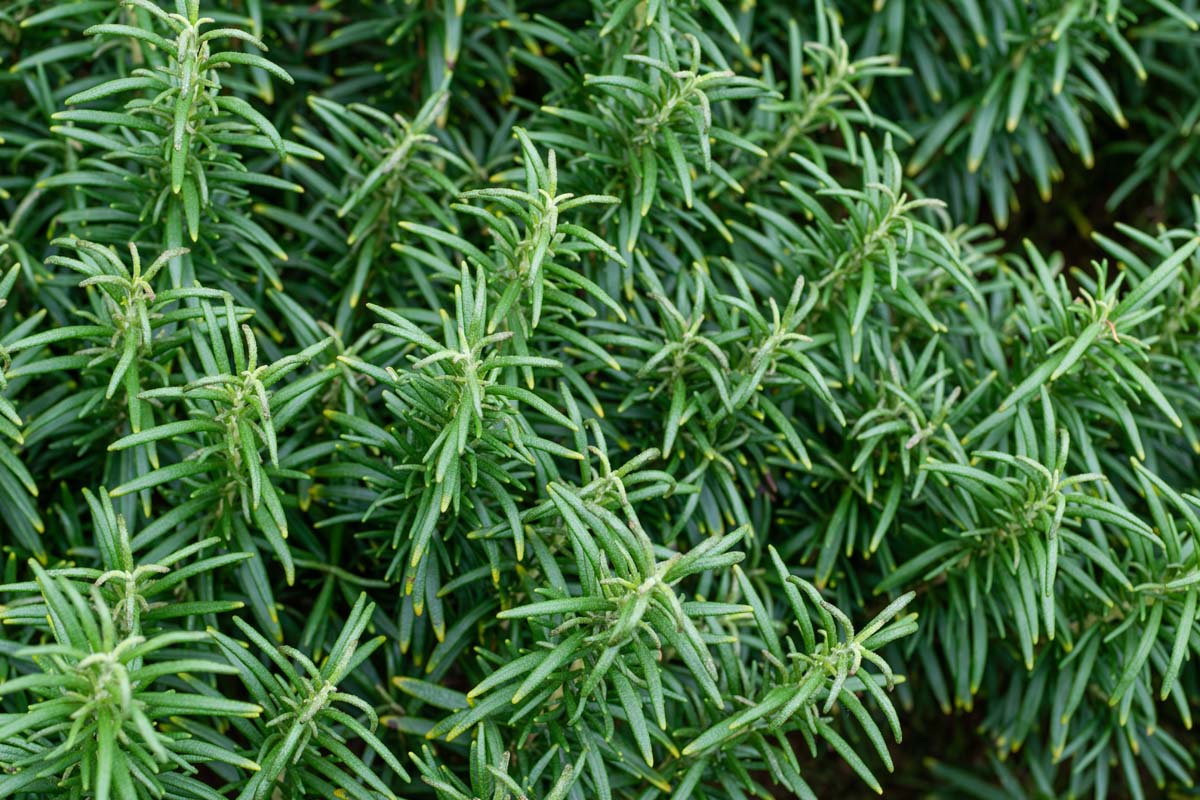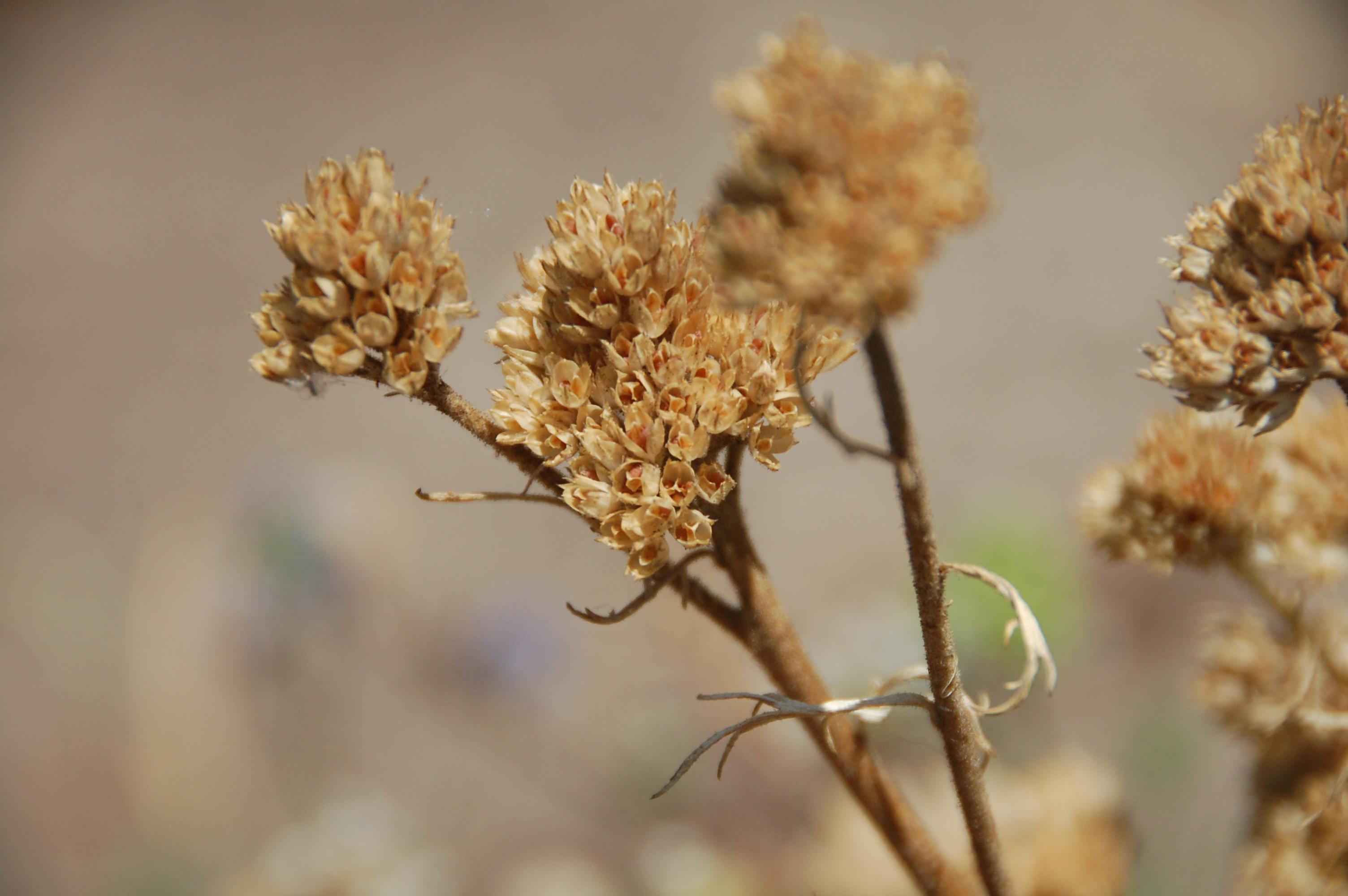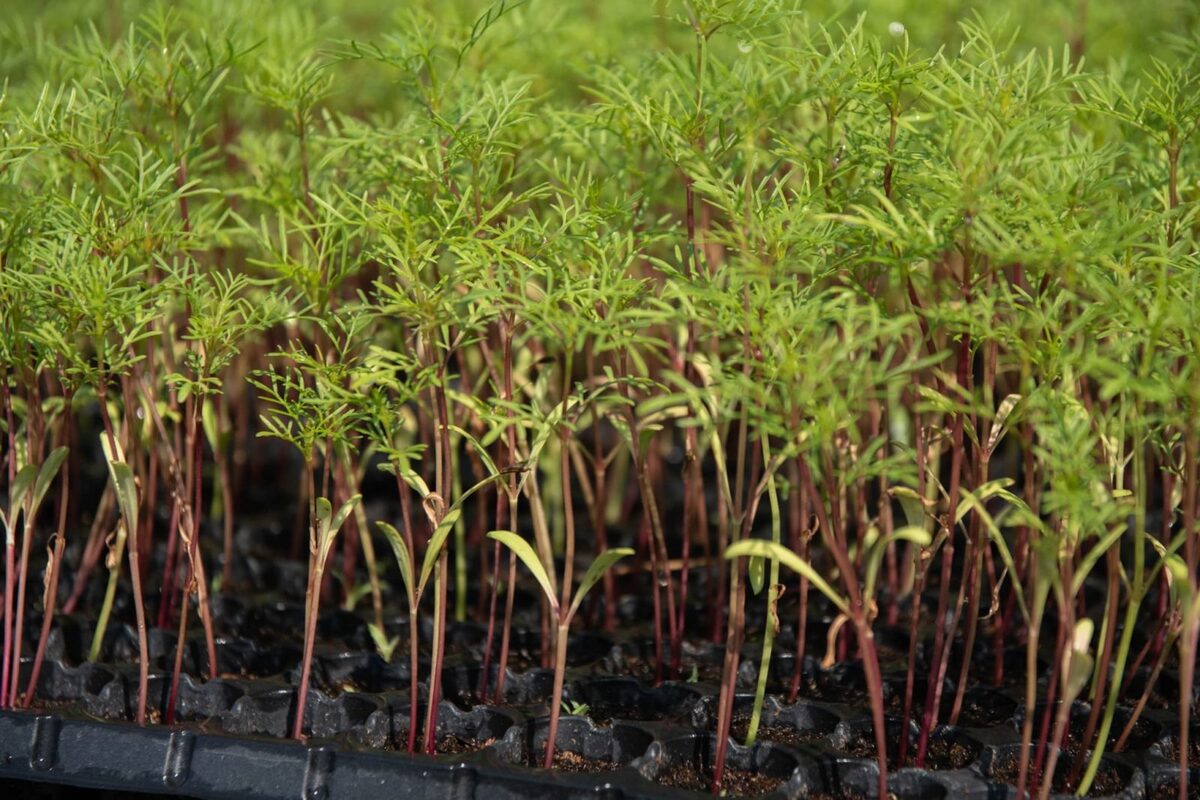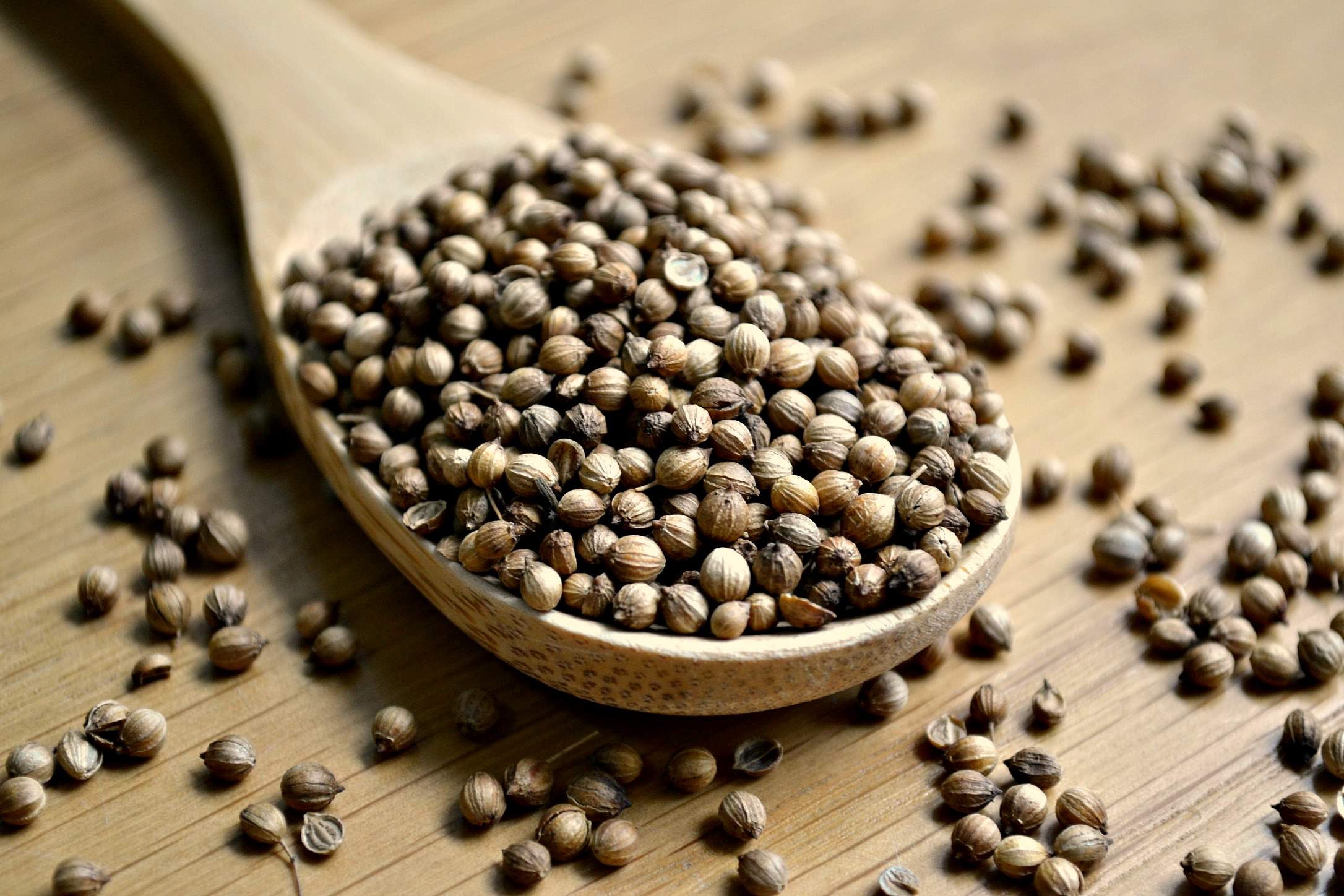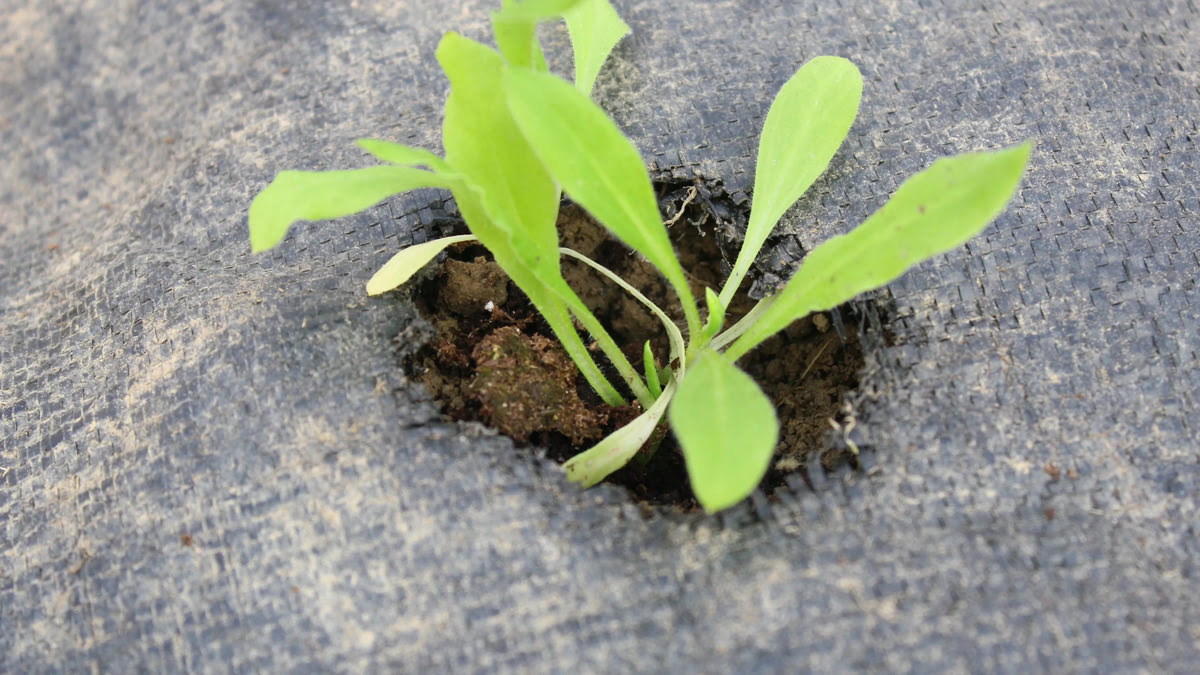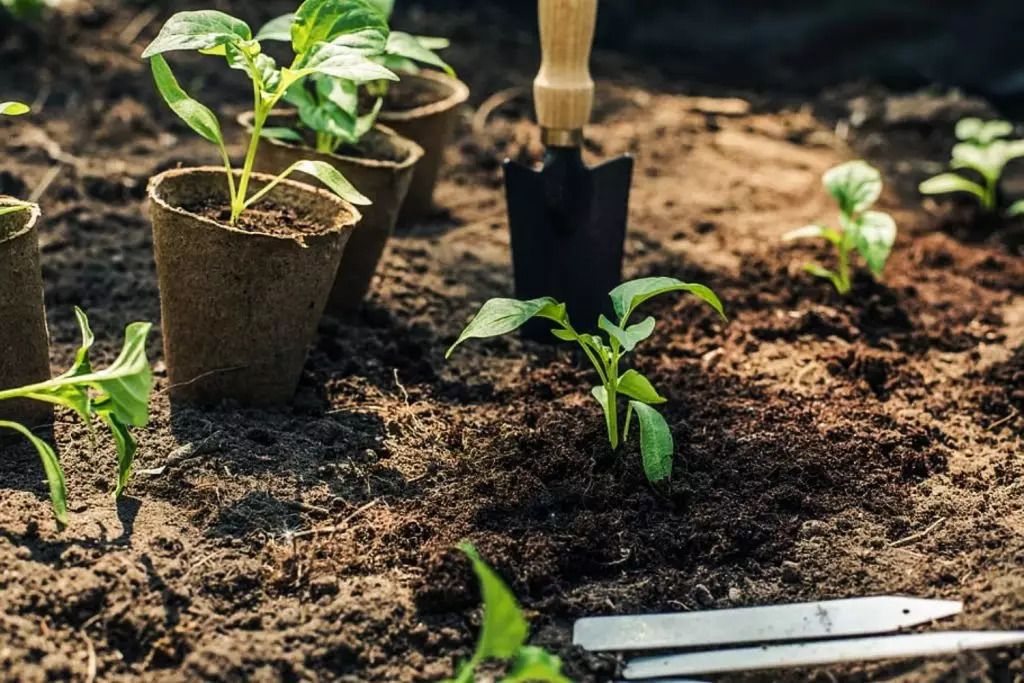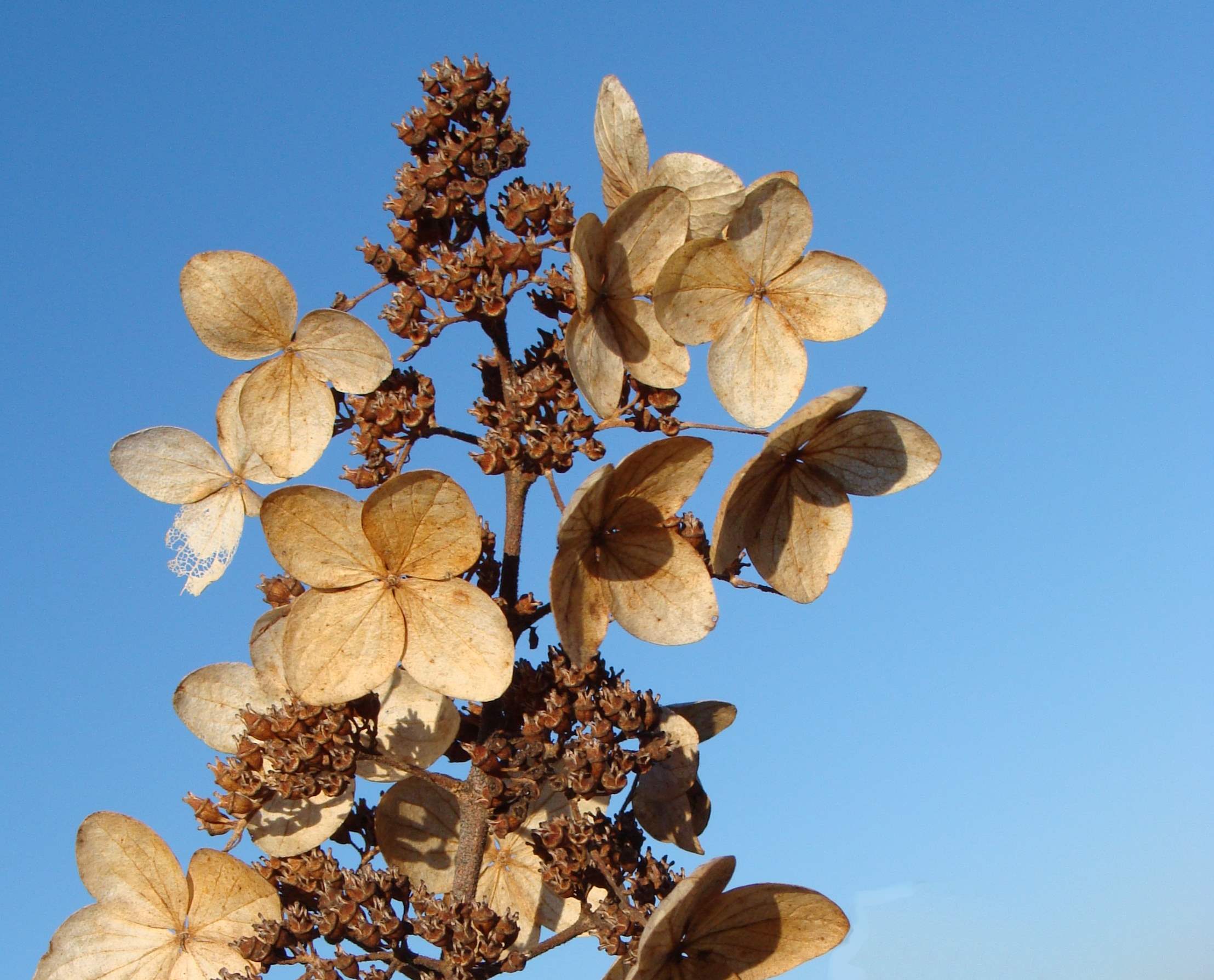Home>Gardening Tips and Tricks>Eco-Friendly Gardening>What Should Compost Look Like
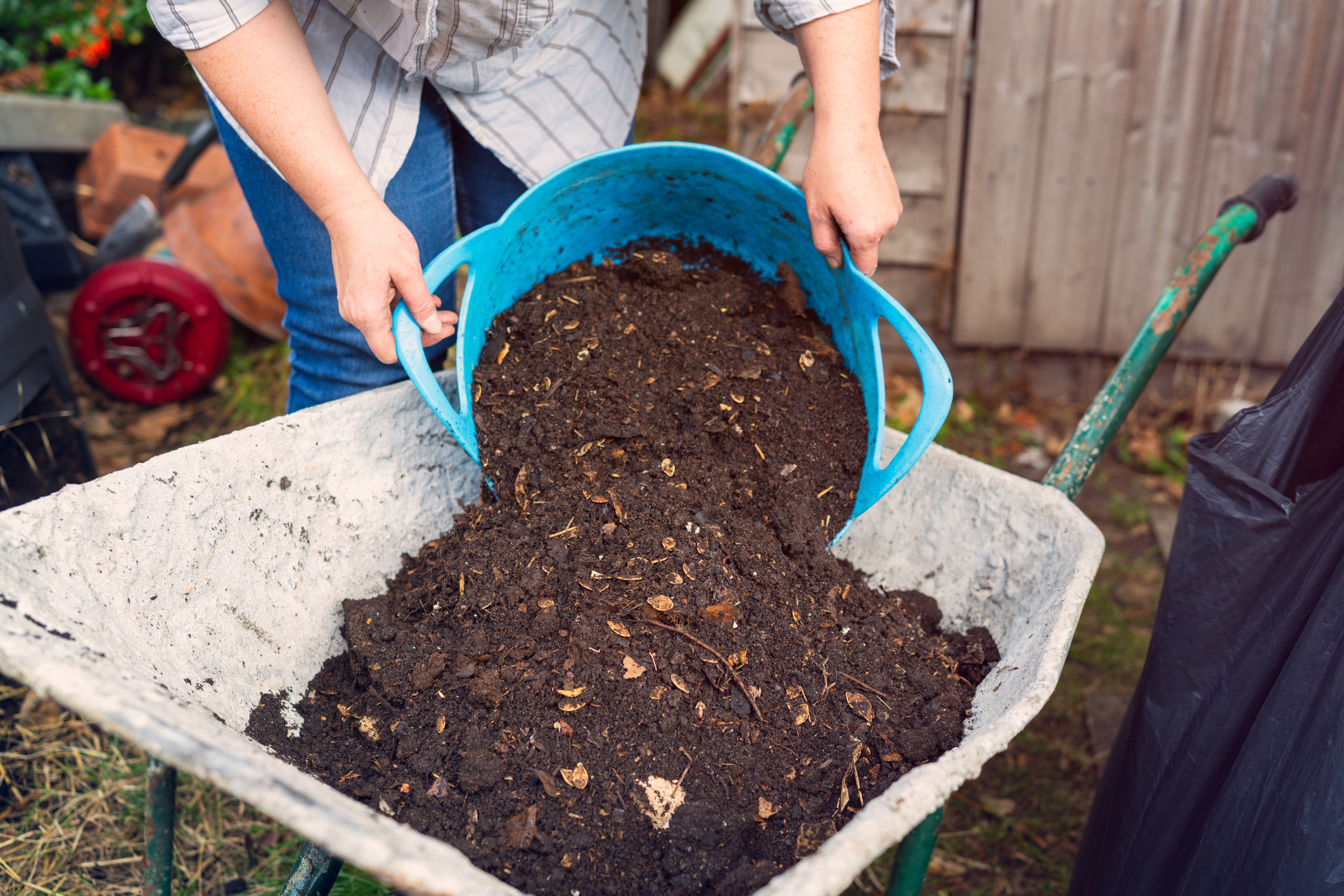

Eco-Friendly Gardening
What Should Compost Look Like
Modified: February 9, 2024
Learn what compost should look like in eco-friendly gardening. Find out the key characteristics and tips for creating nutrient-rich compost for your garden.
(Many of the links in this article redirect to a specific reviewed product. Your purchase of these products through affiliate links helps to generate commission for Chicagolandgardening.com, at no extra cost. Learn more)
Table of Contents
- Introduction
- Factors Influencing Compost Appearance
- Organic Matter Content
- Moisture Level
- Microbial Activity
- Oxygen Levels
- Temperature
- Decomposition Rate
- Common Compost Colors and Their Meanings
- Brown or Dark Brown Compost
- Black Compost
- Green Compost
- White or Gray Compost
- Signs of Healthy Compost
- Earthy Odor
- Crumbly Texture
- Lack of Pests or Weed Seeds
- Conclusion
Introduction
Welcome to the wonderful world of eco-friendly gardening and composting! If you’re new to composting, you may be wondering what compost should actually look like. Compost plays a vital role in sustainable gardening as a nutrient-rich soil amendment that nourishes plants and minimizes the need for chemical fertilizers.
Compost is essentially decomposed organic matter, such as kitchen scraps, leaves, grass clippings, and other plant materials. As this organic matter breaks down over time, it transforms into a dark, crumbly substance that is often referred to as “black gold” due to its immense benefits for garden soil. But compost doesn’t always look the same; its appearance can vary depending on different factors.
In this article, we will explore the factors that influence the appearance of compost, such as the organic matter content, moisture level, microbial activity, oxygen levels, temperature, and decomposition rate. By understanding how these factors interact, you’ll be able to assess the quality and health of your compost and make adjustments if necessary.
Additionally, we’ll delve into the various colors of compost and what they might indicate about its composition and condition. A healthy compost pile should have certain characteristics, such as an earthy odor, a crumbly texture, and the absence of pests or weed seeds. We’ll discuss these signs of healthy compost and why they are important.
So, whether you’re a seasoned gardener looking to improve your composting skills or a beginner seeking guidance, let’s dive into the fascinating world of compost appearance and discover the secrets of healthy, eco-friendly gardening!
Factors Influencing Compost Appearance
Several factors play a significant role in determining the appearance of compost. Understanding these factors can help you assess the quality and effectiveness of your composting process. Here are the key factors that influence compost appearance:
Organic Matter Content: The types and proportions of organic materials used in the compost pile greatly affect the final appearance of the compost. Compost that contains a balanced mix of carbon-rich (brown) and nitrogen-rich (green) materials will have a more uniform and desirable appearance.
Moisture Level: The ideal moisture content for composting ranges from 40% to 60%. If the compost pile is too dry, decomposition slows down, resulting in a lighter and less decomposed appearance. On the other hand, excessive moisture can lead to a slimy and unpleasant-smelling compost.
Microbial Activity: Microorganisms, such as bacteria and fungi, break down the organic matter in the compost pile. Their activity is crucial for decomposition. Compost that appears dark and well decomposed is an indication of active microbial activity.
Oxygen Levels: Adequate oxygen supply is essential for the decomposition process. Compost that is regularly turned or aerated will have a more open and fluffy texture, while a lack of oxygen can lead to a dense and compact appearance.
Temperature: Composting generates heat as microorganisms break down organic matter. High temperatures, usually between 120°F and 160°F (49°C and 71°C), accelerate decomposition and create a pronounced dark brown or black color. Cooler temperatures can result in a slower decomposition process and a lighter-colored compost.
Decomposition Rate: The speed at which compost decomposes can vary depending on several factors, including the size of the organic materials, the carbon to nitrogen ratio, and the environmental conditions. Faster decomposition can result in a finer texture and a darker appearance.
By considering these factors and making adjustments when necessary, you can maximize the quality and effectiveness of your composting process, allowing you to produce nutrient-rich compost ideal for nurturing your plants and gardens.
Organic Matter Content
The organic matter content of your compost is a crucial factor that influences its appearance. Compost is created by the decomposition of various organic materials, which can include kitchen scraps, plant trimmings, leaves, grass clippings, and more.
For optimal composting, it’s essential to maintain a balanced mix of carbon-rich (brown) and nitrogen-rich (green) materials. Brown materials, such as dried leaves or branches, provide carbon, while green materials, like fresh grass clippings or vegetable scraps, supply nitrogen.
The organic matter content affects the appearance of compost in several ways. When the compost pile has a higher proportion of brown materials, it tends to have a darker and more crumbly appearance. This indicates that the carbonaceous materials are properly decomposing and releasing nutrients into the compost.
On the other hand, compost with a higher percentage of green materials may appear greener and less decomposed. This suggests that there is an abundance of nitrogen, which is necessary for microbial activity. However, an excessively high nitrogen content can slow down the decomposition process and result in a slimy, unpleasant-smelling compost.
By achieving a proper balance of carbon and nitrogen in your compost pile, you can ensure a more uniform and desirable appearance. This will indicate that the organic matter is being broken down effectively and will ultimately result in nutrient-rich compost.
To maintain an optimal balance of organic matter, it’s helpful to incorporate a variety of materials into your compost pile. This can include kitchen scraps, garden waste, shredded paper, and even small amounts of well-aged manure. By combining different sources of organic matter, you create a diverse and nutrient-rich environment, supporting the growth and activity of beneficial microorganisms.
Regularly monitoring and adjusting the organic matter content of your compost pile is essential for achieving the desired appearance and quality of the final product. Remember to mix brown and green materials in the correct ratios and provide aeration to promote proper decomposition.
By paying attention to the organic matter content in your compost pile, you can improve its appearance and ensure that you are creating nutrient-rich compost for your eco-friendly gardening endeavors.
Moisture Level
The moisture level is a critical factor that affects the appearance of compost. Composting requires the right amount of moisture to create the ideal environment for decomposition. Proper moisture content promotes the breakdown of organic matter and the activity of beneficial microorganisms.
Compost that is too dry will have a lighter and less decomposed appearance. Dry compost may appear dusty or powdery, indicating that the decomposition process is not occurring at an optimal rate. Insufficient moisture slows down microbial activity, which hinders the breakdown of organic matter and the release of nutrients.
On the other hand, excessive moisture in the compost pile can lead to a slimy and unpleasant-smelling compost. It indicates that water is not draining properly or that the pile is not being turned regularly, resulting in poor aeration. The lack of oxygen in waterlogged compost can cause anaerobic conditions, leading to the growth of harmful bacteria and unpleasant odors.
To maintain the appropriate moisture level, aim for a compost pile that feels like a wrung-out sponge. It should be damp to the touch, but not dripping water when squeezed. If your compost is too dry, you can add water during the turning process or sprinkle water over the top layer. Conversely, if it’s too wet, you can adjust the moisture content by adding dry materials, such as straw or shredded newspaper, to absorb excess water.
Monitoring and maintaining the proper moisture level is crucial for producing compost with a healthy and balanced appearance. The right moisture content ensures that organic matter breaks down efficiently, creating a dark, crumbly texture that indicates decomposition is occurring at an optimal rate.
Keep in mind that moisture levels can fluctuate depending on several factors, including the weather conditions and the types of materials in the compost pile. Be vigilant in monitoring the moisture content and make adjustments as needed to create the ideal environment for composting.
By maintaining the correct moisture level in your compost pile, you will not only improve its appearance but also support the decomposition process. Ultimately, this will result in nutrient-rich compost that can nourish your plants and promote a healthy, eco-friendly garden.
Microbial Activity
Microbial activity is a key factor that influences the appearance of compost. Microorganisms, such as bacteria and fungi, play a crucial role in breaking down organic matter and transforming it into nutrient-rich compost.
Compost with active microbial activity tends to have a dark and well decomposed appearance. This is because the microorganisms are efficiently breaking down the organic materials, releasing beneficial nutrients and compounds in the process.
One indicator of microbial activity in compost is the presence of white, web-like structures called mycelium. Mycelium is the vegetative part of fungi and is often visible on the surface of decomposing organic matter. It indicates that the fungi are actively breaking down the material, helping to accelerate the decomposition process.
Another sign of microbial activity is the presence of earthworms and other soil-dwelling organisms in the compost pile. These creatures aid in the breakdown of organic matter and contribute to the overall health of the compost. Their presence indicates that the compost is providing a favorable environment for beneficial organisms to thrive.
Furthermore, active microbial activity can be observed by the temperature of the compost pile. During decomposition, microorganisms generate heat, which can raise the temperature of the compost pile. Hot composting, where temperatures reach between 120°F and 160°F (49°C and 71°C), is an effective method to accelerate microbial activity and decomposition. Compost created through hot composting tends to have a darker color and a more uniform appearance.
However, it’s important to note that microbial activity can vary depending on several factors, such as the composition of the organic materials and the environmental conditions. Factors like temperature, oxygen levels, and moisture content all influence the activity and efficiency of microorganisms in breaking down organic matter.
To promote microbial activity in your compost pile, ensure that it is properly aerated by turning it regularly. This helps supply oxygen to the microorganisms, allowing them to thrive and decompose the organic matter more efficiently. Additionally, maintaining the correct moisture level and providing a balanced mix of carbon-rich and nitrogen-rich materials can support microbial growth and activity.
A compost pile with active microbial activity will have a well-decomposed appearance, indicating that the organic matter is being properly broken down and nutrients are being released. By fostering a healthy microbial community in your compost pile, you can generate nutrient-rich compost that will contribute to the success of your eco-friendly gardening endeavors.
Oxygen Levels
Oxygen levels play a crucial role in the composting process and influence the appearance of compost. Adequate oxygen supply is essential to support the activity of aerobic microorganisms that thrive in the presence of oxygen.
A well-aerated compost pile will have a more open and fluffy appearance. This is because the oxygen allows the microorganisms to break down organic matter more efficiently, resulting in a faster decomposition process. The presence of oxygen helps prevent the production of unpleasant odors associated with anaerobic decomposition.
If the compost pile lacks oxygen, it can result in anaerobic conditions, leading to a compact and dense appearance. Anaerobic decomposition, which occurs without the presence of oxygen, is slower and less efficient. The lack of oxygen can cause the pile to become compacted and smelly, with a slimy texture.
Properly aerating the compost pile is crucial to maintain optimal oxygen levels. Turning the pile regularly helps introduce fresh air into the mix, which improves decomposition and prevents the development of anaerobic conditions. You can use a garden fork or a compost aerator to ensure that the pile is thoroughly turned and aerated.
Another method to promote aeration is by creating air channels within the compost pile. These channels allow oxygen to reach the core of the pile, where decomposition is most active. You can achieve this by incorporating bulky materials, like branches or straw, into the compost pile. These materials create gaps that facilitate air circulation.
It’s vital to regularly monitor the oxygen levels in your compost pile and make adjustments as necessary. A well-aerated compost pile will have a more desirable appearance, indicating that decomposition is occurring efficiently. It will have a lighter, fluffier texture and show signs of active microbial activity.
Remember that oxygen levels can be compromised if the compost pile is too wet or too compacted. Proper moisture management and regular turning can help maintain adequate oxygen levels. By ensuring that your compost pile has sufficient oxygen, you’ll be able to produce well-aerated compost that nourishes your plants and promotes a thriving eco-friendly garden.
Temperature
The temperature of a compost pile is a vital factor that influences its appearance. Composting generates heat through the activity of microorganisms, and monitoring and controlling the temperature can help ensure efficient decomposition.
During the composting process, the temperature of the pile can fluctuate. Initially, as decomposition begins, the temperature might rise rapidly. This phase, known as the mesophilic stage, typically lasts for a few days to a couple of weeks. The temperature ranges between 70°F and 90°F (21°C and 32°C) during this stage.
As decomposition continues, the temperature may increase further into the thermophilic range, between 120°F and 160°F (49°C and 71°C). This high-temperature stage is crucial for rapidly breaking down organic matter, killing weed seeds, and destroying harmful pathogens and pests. High temperatures tend to result in a more uniform appearance, with a darker and well-decomposed compost.
In contrast, compost piles that do not reach high temperatures or maintain prolonged high temperatures may have a lighter and less decomposed appearance. Cooler temperatures slow down the decomposition process, resulting in a slower breakdown of organic matter and a less uniform compost.
Factors that influence the temperature of the compost pile include the size and composition of the materials, moisture content, and oxygen availability. Larger piles tend to retain more heat, while well-mixed and aerated piles promote better airflow and temperature distribution.
Monitoring the temperature of the compost pile is essential to ensure it remains within the desired range. You can use a compost thermometer to periodically check the internal temperature of the pile. If the temperature is too low, you can add more fresh green materials or turn the pile to introduce oxygen and stimulate microbial activity. If the temperature is too high, you can adjust the moisture content or add dry materials to cool it down.
It’s important to note that excessively high temperatures or prolonged periods of extreme heat can negatively impact the composting process. It can kill beneficial microorganisms and inhibit decomposition. Therefore, maintaining a balance and managing the temperature within the appropriate range is crucial for optimal composting.
By monitoring and controlling the temperature of your compost pile, you can ensure that decomposition occurs at an efficient pace. This will result in a desirable appearance of the compost, indicating that organic matter is being effectively broken down and transformed into nutrient-rich material for your eco-friendly gardening endeavors.
Decomposition Rate
The decomposition rate is a vital factor that directly affects the appearance of compost. It refers to the speed at which organic matter breaks down into nutrient-rich material through the action of microorganisms.
A faster decomposition rate generally results in a finer texture and a darker appearance of compost. The breakdown of organic matter occurs more rapidly, leading to a more uniform and well-decomposed final product.
Several factors influence the decomposition rate of compost. One crucial factor is the size of the organic materials. Smaller particles decompose faster due to the increased surface area available for microbial activity. Shredding or chopping organic materials before adding them to the compost pile can accelerate the decomposition process.
The carbon to nitrogen ratio (C:N ratio) of the compost materials also affects the decomposition rate. An ideal C:N ratio of 30 parts carbon to 1 part nitrogen provides a balanced mix of nutrients for microorganisms. A well-balanced ratio supports their growth and activity, resulting in faster decomposition.
Environmental conditions, such as temperature, moisture level, and oxygen availability, also influence the decomposition rate. Higher temperatures accelerate microbial activity and promote faster decomposition. Optimal moisture levels provide the necessary environment for microorganisms to thrive and decompose organic matter effectively. Adequate oxygen availability ensures aerobic decomposition, which is faster and more efficient.
It’s important to note that the rate of decomposition can vary depending on the specific composition of the compost pile. Different types of organic materials may decompose at different rates. For example, kitchen scraps and grass clippings tend to break down faster than woody materials, such as branches or straw.
Regularly monitoring the decomposition rate of your compost pile is essential. You can track it by observing changes in the appearance and texture of the compost. The presence of a darker color and a finer texture indicates that decomposition is occurring at an optimal rate.
If the decomposition rate appears slow, you can take several steps to accelerate it. Ensure that the compost pile is adequately aerated by turning it regularly to introduce oxygen. Adjust the moisture level if necessary and consider adding nitrogen-rich materials to provide a boost in microbial activity.
By actively managing the decomposition rate, you can produce compost with a desirable appearance and optimal nutrient content. This nutrient-rich compost will enhance the health and vitality of your plants, allowing you to achieve a thriving and eco-friendly garden.
Common Compost Colors and Their Meanings
Compost can come in different colors, and these colors can provide insights into its composition and condition. While the appearance of compost may vary, there are several common colors and their meanings that you should be aware of:
Brown or Dark Brown Compost: Compost with a brown or dark brown color often indicates a well-decomposed and nutrient-rich material. This color suggests a balanced mix of carbon-rich (brown) and nitrogen-rich (green) organic materials, resulting in a desirable compost appearance.
Black Compost: Black compost typically signifies a high level of decomposition. It is often referred to as “black gold” due to its rich nutrient content. Black compost is associated with high heat during the composting process, indicating efficient breakdown of organic matter and the presence of beneficial microorganisms.
Green Compost: Compost that appears green may contain a high proportion of nitrogen-rich materials, such as fresh grass clippings or kitchen scraps. While green compost is not necessarily undesirable, it may indicate an imbalance in the carbon to nitrogen ratio. Adjustments can be made by adding more brown materials to achieve a better balance.
White or Gray Compost: White or gray compost can indicate that the compost pile is too wet or lacks proper aeration. These conditions can result in anaerobic decomposition, causing the compost to become slimy and produce foul odors. To rectify this, ensure the pile is well-aerated and adjust the moisture content by adding dry materials if needed.
It’s important to note that the color of compost alone is not the sole determining factor of its quality. Other indicators, such as texture, odor, and the absence of pests or weed seeds, should also be considered when assessing the overall health and effectiveness of the compost.
By understanding the meanings behind common compost colors, you can gain valuable insights into the composition and condition of your compost. Adjustments can be made to achieve the desired appearance and nutrient content, leading to nutrient-rich compost that will enhance the health and productivity of your plants in an eco-friendly manner.
Brown or Dark Brown Compost
Brown or dark brown compost is often considered the ideal appearance for well-decomposed and nutrient-rich compost. This color indicates a balanced mix of carbon-rich (brown) and nitrogen-rich (green) organic materials, resulting in a desirable compost composition.
Compost with a brown or dark brown color suggests that the carbonaceous materials, such as dried leaves, straw, or wood chips, have undergone sufficient decomposition. The breakdown of these materials releases essential nutrients and organic matter into the compost, enriching the soil when applied in gardening or landscaping.
The dark color of brown compost is generally associated with high microbial activity and optimal decomposition. Active microorganisms, including bacteria and fungi, break down the organic matter and transform it into valuable humus-like substance. This nutrient-rich material improves soil structure, enhances moisture retention, and nourishes plants.
Compost with a brown or dark brown color often has a crumbly texture, indicating that it has reached a stage where it can easily be incorporated into the soil. The fine and airy texture of well-decomposed brown compost allows for better root penetration and nutrient absorption by plants.
Producing brown compost requires attention to the carbon to nitrogen ratio (C:N ratio). It’s essential to have a proper balance between brown materials, which provide carbon, and green materials, which supply nitrogen. Maintaining the ideal C:N ratio of around 30:1 encourages the breakdown and decomposition of the organic matter, leading to the dark brown color desired in compost.
Achieving brown or dark brown compost can be influenced by factors such as the size of the organic materials, the composting method used, and the environmental conditions. Finely shredded or chopped organic materials tend to break down faster, resulting in a darker appearance. Hot composting methods, where piles reach temperatures between 120°F and 160°F (49°C and 71°C), also promote efficient decomposition and brown compost development.
Remember, the color of compost alone does not guarantee its quality. Other indicators, such as the absence of weed seeds or pests and the presence of an earthy odor, should also be considered. But overall, brown or dark brown compost signifies a well-decomposed and nutrient-rich material that can significantly improve the soil health and fertility of your garden.
Black Compost
Black compost is often regarded as “black gold” in the gardening world due to its rich nutrient content and well-decomposed nature. Compost that appears black typically signifies a high level of decomposition, indicating an efficient breakdown of organic matter.
This rich, dark color is a result of the composting process, specifically high temperatures generated during decomposition. When compost piles reach temperatures between 120°F and 160°F (49°C and 71°C), it accelerates microbial activity and enhances decomposition. This high-temperature phase, known as thermophilic composting, helps break down organic matter more rapidly and thoroughly.
Black compost is an excellent indicator of a nutrient-rich end product. The high heat during decomposition kills weed seeds and pathogens, making it suitable for soil amendment in the garden. The breakdown of organic matter into fine particles also contributes to improved soil structure, drainage, and moisture retention.
The dark color of black compost is a result of the breakdown of organic materials, such as leaves, kitchen scraps, or plant trimmings. As these materials decompose, the organic compounds release essential nutrients, including nitrogen, phosphorus, and potassium, which are vital for plant growth and development.
In addition to its nutrient content, black compost typically has a crumbly texture, indicating that it has reached a high degree of decomposition. The finely decomposed particles make it easy to mix into garden soil or incorporate as a top dressing for plants, allowing for better nutrient absorption by roots.
To achieve black compost, it’s essential to create the right conditions for thermophilic composting. This includes maintaining the proper carbon to nitrogen ratio, providing adequate moisture levels, and ensuring proper aeration. Regularly turning the compost pile can help distribute heat and promote even decomposition.
It’s important to note that achieving black compost may require more time and effort compared to other compost colors. It often requires consistent monitoring of temperatures and adjustments to the composting process to maintain the high heat necessary for efficient decomposition.
Black compost serves as a valuable amendment for enriching garden soil and promoting healthy plant growth. Its appearance is a testament to the successful breakdown of organic matter into a nutrient-rich and well-decomposed form, representing a gardener’s dream of harnessing the power of “black gold” in their eco-friendly gardening practices.
Green Compost
Green compost refers to compost that appears green in color. This color indicates a higher proportion of nitrogen-rich materials in the compost pile, such as fresh grass clippings, vegetable scraps, or plant trimmings.
While a green compost appearance is not necessarily undesirable, it may suggest an imbalance in the carbon to nitrogen ratio (C:N ratio). The ideal C:N ratio for efficient decomposition is around 30 parts carbon to 1 part nitrogen. When the compost pile contains an excess of nitrogen-rich materials, it can lead to a greener compost color.
Green compost can result from using an abundance of fresh green materials without sufficient brown materials, such as dried leaves, straw, or wood chips. While nitrogen is essential for microbial activity and decomposition, too much nitrogen can slow down the decomposition process and create unfavorable conditions, such as excess moisture or foul odors.
To rectify a green compost appearance and restore the balance, it’s important to adjust the compost pile’s composition. Adding more carbon-rich materials, such as dried leaves or shredded newspaper, can help balance the C:N ratio and promote efficient decomposition. Turning the compost pile regularly will also help incorporate oxygen and facilitate the breakdown of organic matter.
It’s worth noting that the appearance of green compost does not necessarily mean it is ineffective or lacking in nutrients. Decomposition is still occurring, albeit potentially at a slower rate. The green color indicates the presence of active microbial activity, albeit with an imbalance in carbon and nitrogen that needs adjustment.
By addressing the excess nitrogen in the compost pile and maintaining the proper C:N ratio, you can optimize the decomposition process and produce nutrient-rich compost. A balanced compost composition leads to improved soil fertility, enhanced plant growth, and increased nutrient availability for your garden.
It’s important to be mindful of the materials you add to the compost pile and aim for a balanced mix of carbon-rich and nitrogen-rich materials. With proper adjustments, green compost can be transformed into a well-decomposed and nutrient-dense amendment that benefits your plants and contributes to an eco-friendly gardening practice.
White or Gray Compost
When compost appears white or gray in color, it may indicate that the compost pile is too wet or lacks proper aeration. These conditions can lead to anaerobic decomposition, where breakdown of organic matter occurs in the absence of oxygen. As a result, the compost can become slimy and emit foul odors.
Excessive moisture in the compost pile prevents proper airflow and inhibits the activity of aerobic microorganisms responsible for efficient decomposition. This lack of oxygen creates an environment where anaerobic bacteria thrive, producing byproducts that contribute to the white or gray appearance of the compost.
To rectify a white or gray compost appearance, it’s important to address the excessive moisture. The first step is to ensure your compost pile has the right balance of moisture by adjusting the compost pile’s contents. You can achieve this by adding dry materials such as straw, shredded newspaper, or dried leaves to absorb excess moisture.
Improving aeration is also essential to overcome anaerobic conditions. Regularly turning the compost pile helps introduce oxygen and promotes aerobic decomposition. Incorporating bulky materials like branches or sticks can create air channels, enhancing airflow and oxygenation within the compost pile. These steps will help restore a healthy decomposition process and eliminate the white or gray appearance.
It’s important to note that compost that becomes too wet and anaerobic can have negative effects on plant health. The lack of decomposition can result in the retention of phytotoxic substances and hinder nutrient availability. Therefore, addressing the excessive moisture and promoting proper aeration is essential for producing high-quality compost.
While white or gray compost may initially indicate unfavorable conditions, it can be transformed into a dark, crumbly material with a pleasant earthy smell through proper management. Regular monitoring, sufficient aeration, and appropriate moisture control will restore the compost pile to a healthy state, resulting in nutrient-rich compost that improves soil structure and fosters the growth of healthy plants.
Signs of Healthy Compost
Healthy compost is a result of a well-managed composting process that produces nutrient-rich material beneficial for plants and soil health. Here are some signs to look for to determine if your compost is healthy:
Earthy Odor: Healthy compost has a pleasant, earthy smell that resembles the scent of rich, fertile soil. This odor indicates the presence of beneficial microorganisms actively breaking down organic matter into valuable humus-like material. Foul or putrid odors may indicate improper decomposition or anaerobic conditions, requiring adjustments to the composting process.
Crumbly Texture: When you run your fingers through healthy compost, it should have a crumbly texture. Well-decomposed compost has a light and friable consistency, resembling coffee grounds. This texture indicates that organic materials have broken down thoroughly and will be easily integrated into the soil for optimal plant nutrient uptake.
Lack of Pests or Weed Seeds: Healthy compost should not contain visible pests or weed seeds. Proper composting temperatures and thorough decomposition help eliminate viable weed seeds and pathogens. This ensures that applying compost to your garden beds does not introduce unwanted plants or diseases.
Rich, Dark Color: Healthy compost tends to have a dark, rich color. This suggests that the compost has undergone significant decomposition, resulting in the release of nutrients and beneficial compounds. A well-composted material typically appears brown or dark brown, indicating a balanced mix of carbon and nitrogen-rich materials.
Consistent Moisture Level: Healthy compost maintains a consistent moisture level throughout the pile. It should be damp, similar to a wrung-out sponge, without being overly wet or dry. Proper moisture levels promote microbial activity and decomposition, ensuring the composting process is efficient and effective.
Remember that achieving healthy compost requires appropriate management of the composting process. This involves maintaining the correct balance of green and brown materials, proper oxygenation through regular turning or aeration, and monitoring moisture levels.
Additionally, incorporating a mix of organic materials, such as kitchen scraps, yard waste, and shredded paper, will help create a diverse microbial population and nutrient profile in the compost. This diversity supports healthy soil biology and contributes to the overall health of your plants.
By observing these signs of healthy compost, you can gauge the effectiveness of your composting practices and make any necessary adjustments. Producing healthy compost allows you to enrich your garden soil with valuable nutrients, enhance plant growth, and cultivate a sustainable and thriving ecosystem in your backyard.
Earthy Odor
An earthy odor is one of the key signs of healthy compost. When you take a whiff of properly composted material, you should be greeted with a pleasant scent resembling that of rich, fertile soil. This earthy odor is a result of the activities of beneficial microorganisms breaking down organic matter in the compost pile.
The earthy smell indicates an active and diverse microbial population working to decompose the organic materials. Bacteria, fungi, and other microorganisms produce compounds like geosmin, which give compost its distinct earthy aroma. This odor is similar to the smell of freshly tilled soil, a natural indicator of a healthy and nutrient-rich environment.
An earthy odor suggests that the composting process is functioning well and that organic matter is decomposing properly. The presence of beneficial microorganisms is crucial for transforming organic materials into a nutrient-dense and stable form. These microorganisms break down complex compounds into simpler forms that can be easily absorbed by plant roots.
It’s important to note that while compost should have an earthy aroma, it should not have a strong or overpowering smell. A strong odor, such as a rotten or putrid scent, could indicate improper composting conditions, such as insufficient oxygen or an imbalance in the compost’s moisture content.
If your compost has an unpleasant odor, it may be a sign that adjustments are needed. Turning the compost pile to introduce more oxygen or adjusting the moisture level by adding dry materials can help address improper decomposition and odor issues. A well-aerated and properly moistened compost pile will support the growth of beneficial microorganisms and ensure a healthy, earthy smell.
Remember that different composting materials can contribute to variations in the earthy odor. For example, compost containing food scraps may have a slightly sweeter scent, while compost with more woody materials, like leaves or branches, can impart a more earthy and organic fragrance.
By embracing the earthy odor and paying attention to its quality, you can assess the health of your compost. A pleasant, natural scent reflects an active microbial community, efficient decomposition, and a nutrient-rich end product that will contribute to the success and vitality of your garden.
Crumbly Texture
The crumbly texture is a significant characteristic of healthy compost. When you run your fingers through well-decomposed compost, it should break apart easily into fine particles, resembling coffee grounds or breadcrumbs. This crumbly texture is an indication that the organic materials in the compost pile have undergone thorough decomposition.
Achieving a crumbly texture in compost is key because it helps with its incorporation into the soil and enhances nutrient availability for plants. The decomposition process breaks down complex organic compounds into simpler forms that are easier for plants to absorb. The crumbly texture allows the compost to integrate seamlessly into the soil, providing vital nutrients and improving soil structure.
This crumbly texture arises from the breakdown of organic materials by microorganisms. Beneficial bacteria, fungi, and other decomposer organisms work together to break down complex organic compounds into humus-like material. As these materials decompose, they transform into particles that crumble easily, ensuring a more even distribution when applied to garden beds or mixed into potting soil.
The crumbly texture also facilitates better aeration and water retention in the soil. The fine particles create space for air circulation, which benefits root respiration and nutrient absorption. It also improves drainage, allowing excess water to move away from plant roots, thus reducing the risk of waterlogging.
To achieve a crumbly texture, it’s important to maintain proper composting conditions. This includes a balanced carbon to nitrogen ratio (C:N ratio), sufficient oxygen supply through regular turning or aeration, and proper moisture control. Monitor the moisture levels to prevent the compost from becoming too dry or too wet, as these conditions can hinder microbial activity and impact the texture of the compost.
Regularly turning the compost pile helps distribute moisture and oxygen throughout, promoting microbial activity and decomposition. As the organic materials break down and the compost matures, the crumbly texture develops, indicating the optimal decomposition and valuable nutrient content.
It’s worth noting that achieving the crumbly texture can take time, depending on factors such as the composition of the compost pile, the size of organic materials, and the environmental conditions. Patience and proper management are essential to allow the compost to reach the desired texture.
By celebrating the crumbly texture in your compost, you can harness its benefits in your gardening endeavors. The fine particles blend seamlessly into the soil, providing essential nutrients, improving soil structure, and supporting the healthy growth of plants in an eco-friendly manner.
Lack of Pests or Weed Seeds
A sign of healthy compost is the absence of visible pests or weed seeds. A well-managed composting process helps create an environment that discourages the presence of pests and minimizes the spread of weed seeds.
During the composting process, high temperatures are generated, especially during the thermophilic phase, which can reach between 120°F and 160°F (49°C and 71°C). These elevated temperatures help kill off weed seeds, pathogens, and eggs of pests that may be present in the organic materials added to the compost pile.
Proper decomposition and the sustained high temperatures in a well-maintained compost pile are effective in eliminating weed seeds, reducing the chances of weed growth when the compost is applied to the garden. This is particularly beneficial for organic gardeners or those looking to minimize the use of herbicides.
In addition to weed seeds, the high temperatures also contribute to reducing the population of harmful pests and the survival of their eggs and larvae. The heat created during thermophilic composting can help destroy or limit the presence of pests such as flies, ants, gnats, and other insect larvae.
A lack of visible pests or weed seeds in your compost is an encouraging sign that the composting process has been successful in creating unfavorable conditions for their survival. However, it’s important to note that this doesn’t guarantee complete eradication. Some small insects or their eggs may still be present in the compost, but in significantly reduced numbers.
To maintain a pest-free and weed seed-free compost, it’s essential to follow proper composting guidelines. This includes regularly turning the compost pile to ensure thorough decomposition and sufficient exposure to high temperatures. Adequate moisture and aeration are also important factors in promoting the breakdown of organic matter and deterring pest activity.
When using the compost in your garden, it’s advisable to apply a thin layer and avoid incorporating any visible weed seeds. Taking precautions can minimize the chances of weed growth and reduce the need for additional weed control measures.
While a lack of pests or weed seeds is an encouraging sign of healthy compost, it’s important to remain vigilant. Regularly monitor your garden beds to address any emerging weeds promptly and take appropriate measures to prevent pest infestations. By using healthy, weed-free compost, you’re providing your garden with nutrient-rich material while minimizing potential challenges associated with pests and weeds.
Conclusion
Understanding the appearance of compost and what it signifies is crucial for successful and eco-friendly gardening. By paying attention to key factors like organic matter content, moisture level, microbial activity, oxygen levels, temperature, and decomposition rate, you can assess the quality and health of your compost.
Organic matter content plays a significant role in determining compost appearance, with a balanced mix of carbon-rich (brown) and nitrogen-rich (green) materials resulting in a desirable compost color. Proper moisture levels ensure efficient decomposition, preventing compost from appearing too dry or too wet.
Microbial activity and oxygen availability are essential for effective decomposition, resulting in a dark and well-decomposed appearance. Monitoring and maintaining an ideal temperature range support the breakdown of organic matter and the development of nutrient-rich compost.
Compost comes in various colors, each with its own meaning. Brown or dark brown compost signifies a well-decomposed and nutrient-rich material, while black compost indicates high decomposition and nutrient content. Green compost may suggest an imbalance in the carbon to nitrogen ratio, while white or gray compost signals excess moisture and anaerobic conditions that need to be addressed.
Recognizing signs of healthy compost, including an earthy odor, crumbly texture, and the absence of pests or weed seeds, helps determine the effectiveness of your composting process. These indicators reflect proper microbial activity, nutrient availability, and a reduced risk of unwanted pests and weed growth.
Creating and maintaining healthy compost requires attention to detail, such as maintaining proper composting conditions, managing the moisture level, achieving a balanced carbon to nitrogen ratio, and ensuring adequate oxygen supply. Regular monitoring and adjustment of these factors will help you produce nutrient-rich compost that enhances soil fertility and supports the growth of healthy plants.
Incorporating these best practices into your eco-friendly gardening routine will contribute to sustainable soil management, reduce the need for chemical fertilizers, and promote a thriving and environmentally friendly garden. So grab your gardening gloves and get ready to harness the power of composting in your quest for beautiful, bountiful, and eco-friendly gardens!
